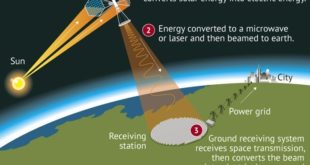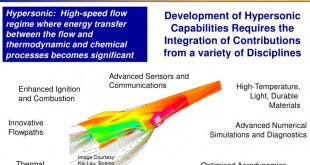Introduction
China’s pursuit of space mining begins with its lunar exploration program, notably the successful Chang’e missions. These endeavors, involving lunar landings, sample collections, and surface mapping, form the groundwork for understanding lunar composition and potential resource extraction. Beyond exploration, China envisions a permanent lunar research base as a strategic hub for scientific endeavors, resource extraction, and potential human habitation.
China’s Lunar Ambitions: A Stepping Stone to Space Mining
China’s lunar exploration program is laying the foundation for its future endeavors in space mining. The nation’s Chang’e lunar exploration missions have successfully landed on the Moon, collected samples, and mapped its surface. These missions have provided invaluable insights into the Moon’s composition and resource potential, paving the way for future resource extraction.
China’s lunar ambitions extend beyond exploration. The nation has plans to establish a permanent lunar research base, providing a foothold for future space mining operations. This base could serve as a hub for scientific research, resource extraction, and potential human habitation. The nation also plans to develop technologies to extract resources such as helium-3, a rare isotope that could be used for nuclear fusion.
Asteroid Mining: The Next Frontier
China’s vision extends beyond the Moon to asteroids, celestial bodies holding vast reservoirs of precious metals, minerals, and water. Asteroid mining presents a frontier solution to Earth’s resource demands. China has already demonstrated its commitment with the Chang’e-2 probe’s successful encounter with the asteroid Toutatis, providing crucial data on the composition and potential mining methodologies.
China’s commitment to space exploration is further evidenced by its upcoming missions, such as the launch of the robotic probe Tianwen-2 in 2025 to collect samples from the near-Earth asteroid 2016 HO3. Additionally, the Chang’e-7 spacecraft is anticipated to land at the moon’s south pole in 2026, exploring the potential for water ice that could be utilized for various purposes, including sustaining astronauts during prolonged lunar missions.
Interplanetary Roadmap
In a bold stride towards the forefront of space exploration, China has unveiled a visionary roadmap outlining plans for a comprehensive space resources system spanning the entire solar system by 2100. Notably, the plan highlights the economic viability of mining approximately 122 asteroids near Earth, estimated to be worth over US$100 trillion each, considering technical feasibility and cost-effectiveness.
Spearheaded by Wang Wei, lead scientist at the China Aerospace Science and Technology Corporation, the initiative aims to economically explore, mine, and leverage water ice and mineral resources not only on the moon but also in deep space, marking a pivotal shift in the economic dynamics between nations.
Named after the Ming dynasty scientist Song Yingxing’s seminal work, “Tiangong Kaiwu,” or “The Exploitation of the Works of Nature,” the ambitious plan is anticipated to propel China into a leadership role in the global space economy. Wang Wei emphasized that the rapid advancement of space technologies could soon enable the economic exploitation of space resources beyond the Earth-moon system, presenting a strategic advantage in the international economic landscape.
The roadmap envisions the establishment of gravitationally-balanced nodes strategically positioned between celestial bodies, including planets, moons, and the sun. Wang Wei’s team has meticulously examined the feasibility and key technologies involved in harnessing deep space resources over the past three years. The plan encompasses building facilities on the moon, near-Earth asteroids, Mars, main-belt asteroids, and the moons of Jupiter, with the ultimate goal of creating a resupply system spanning the entire solar system.
Critical to the success of this ambitious endeavor is the deployment of facilities at gravitationally stable Lagrange points between Earth and the moon, as well as points between the sun and each of Earth, Mars, and Jupiter. Wang Wei’s proposal extends beyond mere resupply systems, outlining the construction of a comprehensive infrastructure, including resource transport routes and extraterrestrial mining and processing stations. These elements are crucial for facilitating large-scale, commercial space operations.
The announcement aligns with the broader trend of global interest in space mining, with Chinese companies like Origin Space actively participating in the race to develop space mining technologies. As China unfolds its ambitious roadmap, the implications for the future of space exploration and resource utilization are profound, promising to reshape the economic landscape both on Earth and beyond.
Technological Advancements: Enabling Space Mining
To complete the envisioned system, Wang Wei stresses the necessity of developing technologies related to space resource mining and processing, flight-based transport, low-cost resource return, and more, with projected deadlines set between 2035 and 2100.
China is actively developing the technological infrastructure crucial for successful space mining missions. Advancements in robotics, spacecraft propulsion systems, and resource extraction techniques are at the forefront.
Robotics:
China is at the forefront of robotics development, with a strong focus on space applications. The nation has developed several robotic technologies that could be used for space mining, including:
-
Lunar rovers: These rovers can explore the Moon’s surface, collect samples, and identify potential resource deposits.
-
Asteroid mining robots: These robots could be used to extract resources from asteroids, such as precious metals and water.
Resource Extraction Techniques:
China is also developing innovative resource extraction techniques for space mining. These techniques include:
-
In-situ resource utilization (ISRU): ISRU techniques allow for the extraction and processing of resources found in space, eliminating the need to transport them back to Earth.
-
3D printing: 3D printing could be used to construct mining equipment and infrastructure in space.
Spacecraft Propulsion Systems:
China has made impressive progress in developing spacecraft propulsion systems, including:
-
High-power electric propulsion systems: These systems could be used to propel spacecraft to asteroids and other distant destinations with greater efficiency than traditional chemical propulsion systems.
-
Nuclear propulsion systems: Nuclear propulsion systems could provide the power needed for large-scale space mining operations.
Concurrently, investments in in-situ resource utilization (ISRU) technologies signify a commitment to process resources found in space, reducing dependence on Earth-bound supplies.
Global Implications and Ethical Considerations
China’s strides in space mining bring forth both opportunities and challenges. While it holds the promise of new resource outlets and technological breakthroughs, concerns about environmental impact, international collaboration, and ethical considerations arise. Establishing international frameworks and guidelines becomes imperative to ensure responsible space exploration and equitable resource utilization.
Conclusion: A New Era of Space Exploration
China’s ambitious roadmap for space mining heralds a transformative era in space exploration and resource utilization. With its technological prowess and steadfast commitment, China emerges as a frontrunner in shaping the future of space mining. Striking a balance between innovation, sustainability, and international collaboration is paramount as China ventures into the cosmos. The success of space mining must benefit humanity as a whole, reflecting a harmonious integration of technological advancement and responsible resource management.
 International Defense Security & Technology Your trusted Source for News, Research and Analysis
International Defense Security & Technology Your trusted Source for News, Research and Analysis

